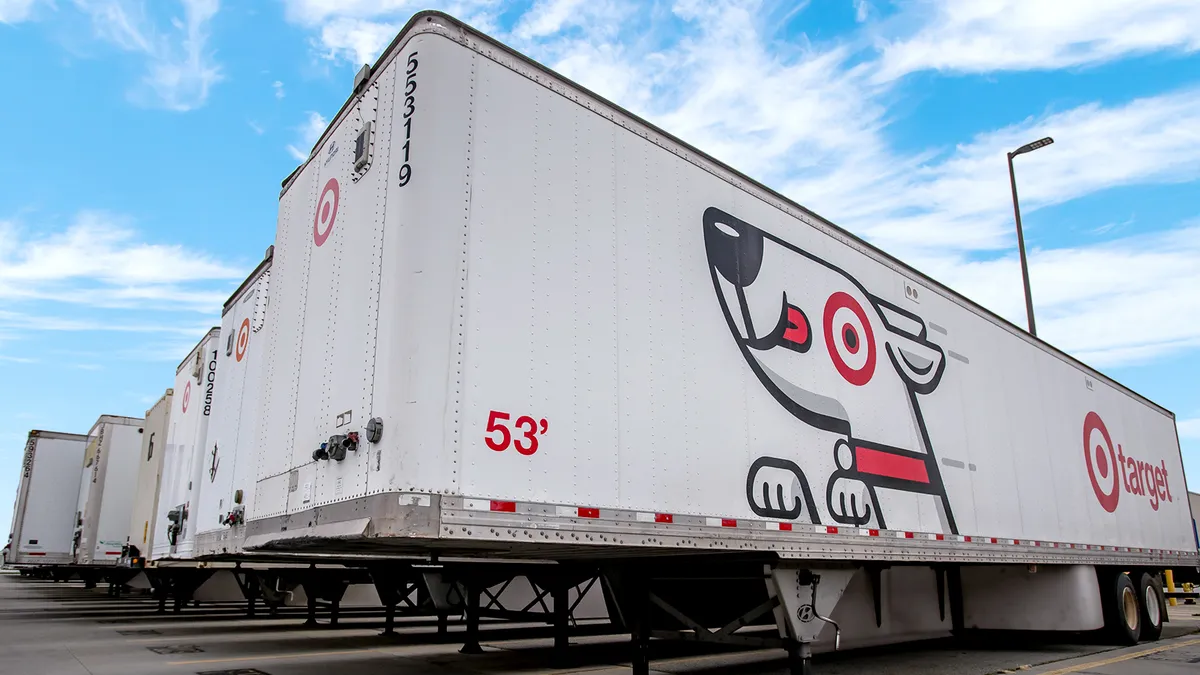Dive Brief:
- Just weeks after signaling it expected lower second-quarter profits, Target announced it was taking additional steps to pare down its inventory and would absorb an even bigger hit to profit margins.
- In a press release Tuesday, the retailer said it would take additional markdowns, along with removing excess inventory and canceling orders to rightsize its stock levels.
- Target also said it is making "rapid revisions to sales forecasts, promotional plans and cost expectations by category." The company now forecasts a Q2 operating margin rate of around 2%, compared to previous guidance of within a "wide range" of 5.3%.
Dive Insight:
Target already shook up the retail world in May with its Q1 results, which showed a major hit to the retailer's profits and led it to lower its guidance. At the time, the retailer noted that it had taken markdowns in several discretionary areas where sales lagged expectations.
It was taken as a broad signal to the market that consumers were feeling the pain from inflation and the end of government stimulus, and adjusting their spending accordingly. Taken with Walmart's lower-than-expected profits, analysts have taken a more negative view of retail for 2022 since mid-May.
Now, just weeks later, Target is revising its estimates down again and scrambling to clear its stores and lower its inventory levels going forward.
Target said the moves were intended to "create additional flexibility to focus on serving guests in a rapidly changing environment" as well as "further build on the Company’s record of growth and market-share gains."
The note on market share gains suggests Target may be absorbing some profit declines to take advantage of an inflationary environment, winning over customers by keeping its own prices down where it can. Although Target also said it would take "pricing actions" to mitigate spiking fuel and transportation costs.
Beyond how it is dealing with consumer changes, the retailer is working to ease disruptions and rising costs in its supply chain. Its plans also call for adding holding capacity near domestic ports to add speed and flexibility, and Target said it planned to add five distribution centers over the next two fiscal years. Additionally, the company said it was working with vendors to shorten distances and lead times as well as offset pressure from inflation and drive operational efficiencies.
Target's sales expectations could be a window into what much of the industry faces in Q2. Specifically, the company said it expected strong sales to continue in its food and beverage, household essentials and beauty categories. But its sales estimates are now more conservative in discretionary categories. Target singled out the home category, of which it said "trends have changed rapidly since the beginning of the year."
Overall, the retailer's top line appears healthy for now. It made no changes to its sales guidance. "Target’s business continues to generate healthy increases in traffic and sales, despite sustained volatility in the macro environment, including shifting consumer buying patterns and rapidly changing operating conditions," Chief Executive Officer Brian Cornell said in a statement.
John Zolidis, president of research advisory Quo Vadis Capital, said in emailed comments that Target's release "signals something went really wrong in the planning and allocation department."
"A second cut to guidance in three weeks certainly gives us pause, especially in the context of other retailer reports, some of which have been solid," Zolidis added. "It suggests [Target]'s issues are internal rather than external."
For the back half of the year, Target expects its operating margin rate to rebound back to the 6% range, indicating it expects the current challenges to be a speed bump.













